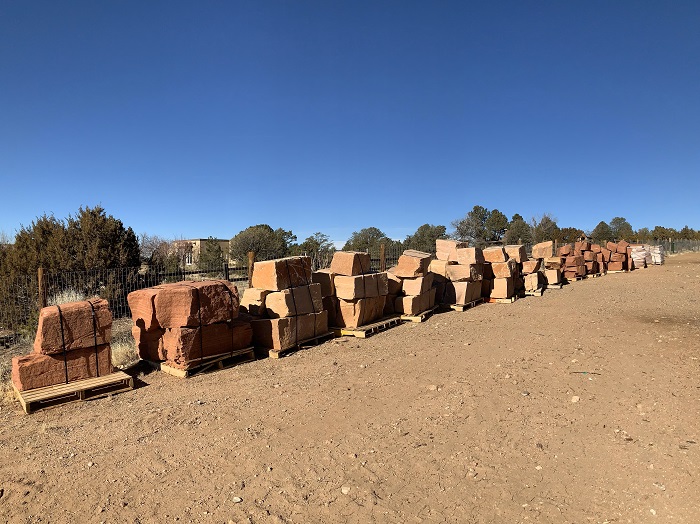February 1, 2022
The Santa Fe Botanical Garden on Museum Hill straddles the Arroyo de los Pinos, where several still visible and functioning gabions, including a major installation by the CCC in the 1930’s, were installed over various periods during the 20th century to stabilize the arroyo and reduce the erosive effects of water rushing through the arroyo. The Garden also has stabilized various areas of eroding side shelves and deep head-cuts created by side drainages into the arroyo, both of which threatened the integrity and safety of our garden spaces.

The Garden is fortunate to partner with Craig Sponholtz, founder of Watershed Artisans, Inc. (WAI), his implementation team including Omar Ore-Giron from Tucson, AZ and Santa Fe hydrologist Aaron Kauffman, both of whom are experts in design and installation, and their extensive experience healing watersheds and rebuilding soils to create regenerative, productive and fertile agro and natural ecosystems. Craig Sponholz participated in the Garden’s initial development of its Museum Hill site beginning around 2012, called the Orchard Gardens, which publicly opened in July, 2013. The extensive system of meandering rock swales (La Rambla) and water capture ponding areas (Zuni bowls), installed to slow surface runoff and to stabilize the largest head-cuts, is work Craig designed and installed together with Reese Baker of The Raincatcher.
The current Piñon-Juniper Woodland (PJW) Arroyo Restoration project at the Garden has two Phases:
Phase I: completed in Nov. 2021, involves surface water controls from the site’s western high point, from which water runs into a steep eroded gully that terminates in Arroyo de los Pinos. Extensive rock work was installed in the gully itself to stabilize and protect it from further erosion along its steep walls. Native seed was incorporated with the rock installation to help further stabilize soils, and to help soften and naturalize the appearance of the rock work while taking advantage of the additional moisture captured and held by the rock.
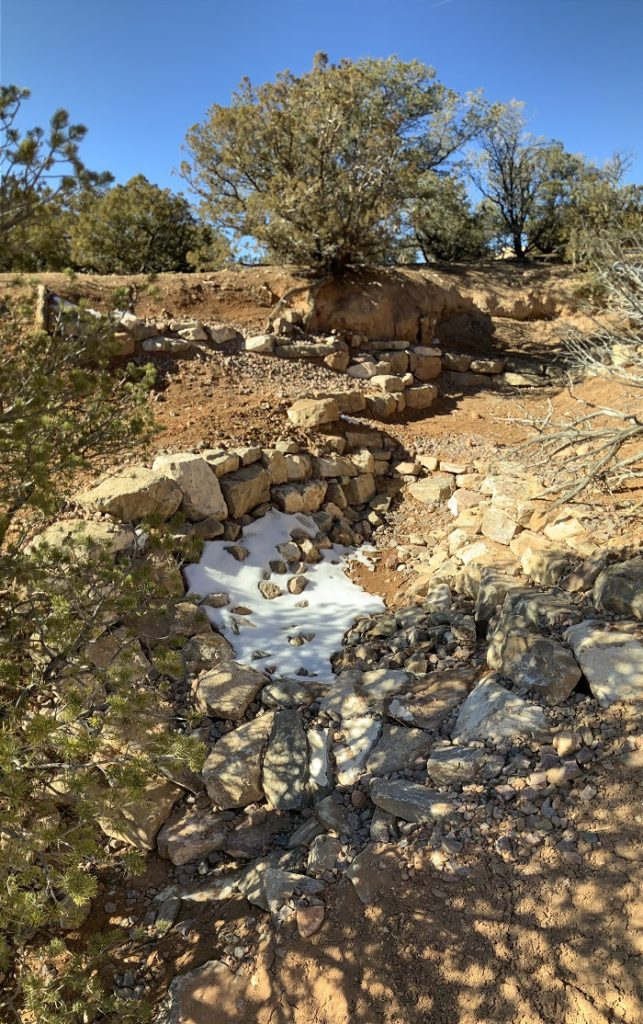
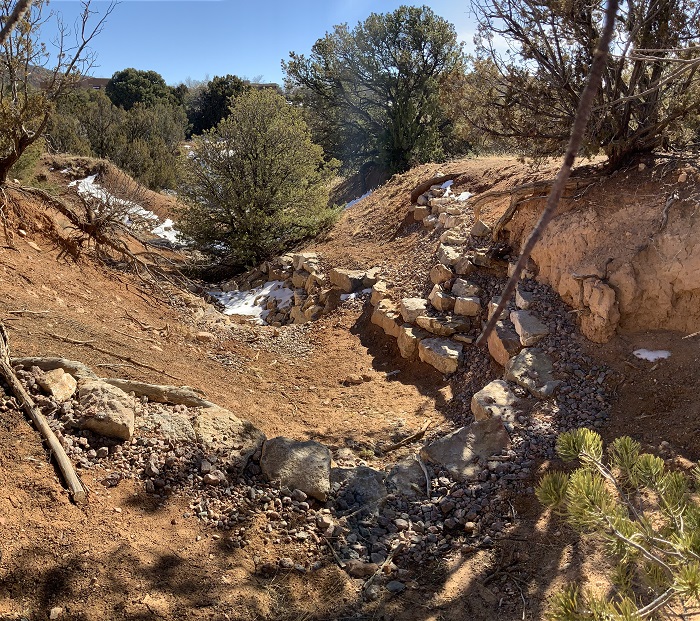
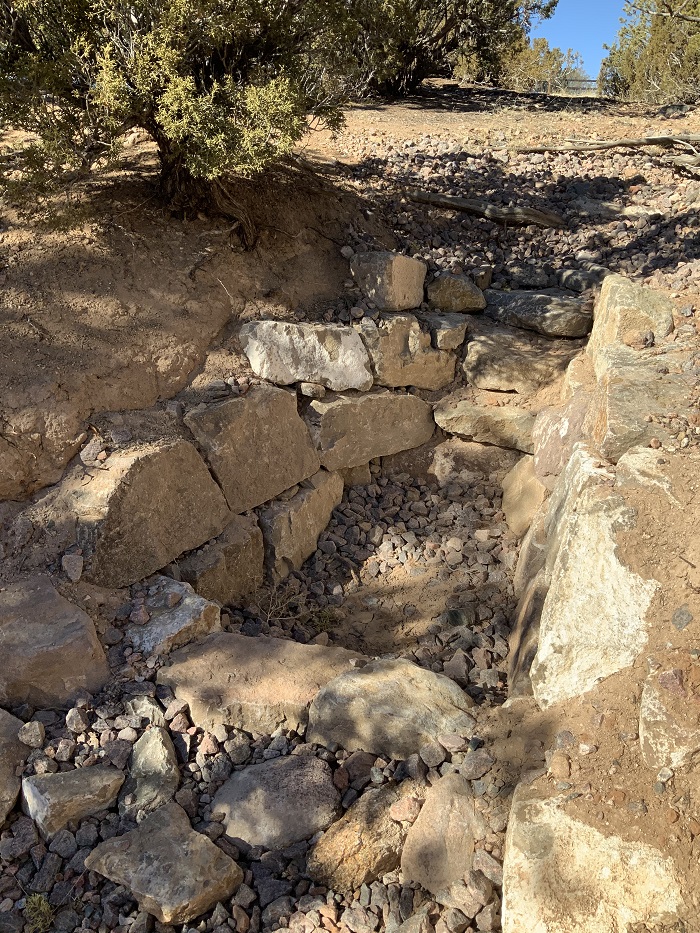
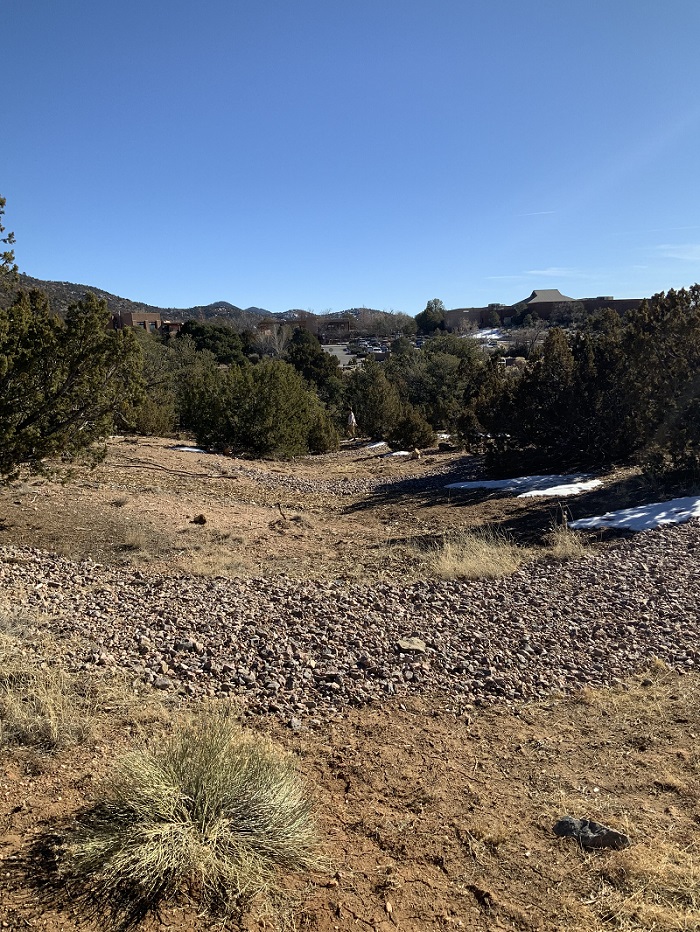
Phase II: which may begin as early as March 1st, is expected to progress over 4 or 5 weeks. Forty pallets, each holding ~2 tons of Sedona sandstone, combined with a range of large to smaller limestone boulders are currently situated along the PJW service road in preparation for the work to commence. The work has two primary purposes: a) to reduce erosion, while capturing water on the east facing shelf of the arroyo-primarily using limestone, and b) to stabilize and minimize the vertical drop offs of the shelf slopes, while creating a simulated sandstone rock outcropping via discontinuous segments/sections.
